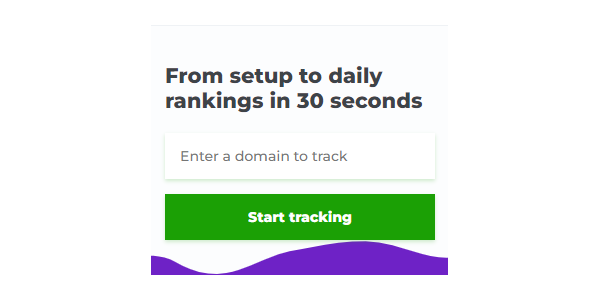
A corporation does not need to engage in electronic commerce to gain advantages from a website that has been professionally made. Today, the majority of physical stores in a given area depend on their online impact to interact with patrons and lure them to the establishment. The majority of people are now looking for locally-sourced items and businesses prior to making a purchase or during their travels. Without having a website, a local company won’t be able to attract those prospective customers.
If you require assistance to create or modernize a website for your area-specific business, there are options to assist you. The ideal collaborator for the task is a website designer from the region who is knowledgeable about your organization and the industry. The construction of a website is different for each customer, but a local web designer typically goes through these standard methods.
Step One: Establish the Purpose of the Site and the Target Audience
The first step in creating a website involves communication between the designer and the client. It is critical to go over the objectives of the company and the reason for the website. Talk about how the website will play into the overall plan for marketing. It is important to figure out what role the website will have in the broader marketing strategy.
For example, will the website be used for e-commerce? Will it be employed to create a mailing list by gathering data from customers? Is there a way for the business to communicate with customers? Will customers be able to locate the website when they type certain keywords into a Google search?
Gaining an understanding of the target audience is crucial to providing answers to these inquiries. A web designer from the area where the client resides will have a thorough understanding of who the client is aiming to reach with their product. Being aware of their identity, their place of residence, when they purchase items and the methods of their shopping are all part of this know-how. It is important to tailor a website’s user experience for certain audiences using these specifics.
Step Two: Choose a Domain Name
After determining the reason for the website and defining the intended audience, the next phase for crafting a website for a local enterprise is deciding on a domain name. Although a seemingly minute point, having the correct domain name and website address makes it simpler for customers to find the website when they search online.
As an illustration, a marvelous domain name is straightforward to pronounce and recall. The domain name you choose should be succinct and give some indication of the purpose it serves, without being too general or specific. The title should exclude figures or bizarre spellings that would make it challenging for customers to recall. Inserting a location tag, say a city name, in the URL can assist local clients in uncovering the website when searching for a nearby enterprise.
Step Three: Select a Theme
A theme is a fundamental graphical design that provides a unique look and feel to a website. A theme consists of a backdrop color or image, the formatting of texts and visuals on the page, and the font style. The design style of a website is essential since it needs to reflect the identity of the company. It also must supply all relevant details that local patrons need to locate. This data would consist of the business’s name, address, and contact number. This data should be consistently showcased on every webpage of a website.
A wide selection of themes can be chosen from, and most of them can be altered. It might be possible to construct a theme by yourself, however, utilizing a theme that is already created has advantages. The initial factor to consider is cost; by having a theme created for you, you can bypass the need to construct a website from the beginning. Additionally, a well-constructed theme should be able to adapt and look good on any web browser.
A local web designer has the option of either developing a brand-new concept or personalizing an already existing one. The design of the site should be consistent with what the website intends to accomplish and also be suitable for all users. Since customers often view sites that look alike, having an unconventional design will help your website be noticed and capture the attention of your customers.
Step Four: Design the Overall Structure of the Site and Build the Pages
Constructing the webpages that are going to make up the website is the subsequent process. This stage requires the development of a comprehensive blueprint for the layout of the website. The web designer and client must collaborate to create the plan by talking about what material the website will include. Aside from a home page, it is common for a website to also include an info page, pages focused on individual services or items that are sold, pages for each physical store, a blog, an FAQ section, and something to manage e-commerce transactions.
Constructing a cohesive architecture is essential to unifying these components. The design of the architecture should be simple to maneuver, both for human guests and for search engines. Web developers should contemplate the method of classifying content, what kind of menus and sub-menus to employ, and where to embed intra-site links linking one webpage to another. Sub-menus are incredibly helpful for delivering content geared towards precise groups of people (such as clients in a certain place or people who shop for a certain type of items).
Architecture that is carefully planned will result in a website that is both fast to load and easy to traverse, while being visually attractive. It is beneficial to assess the sites that a local design agency has built and observe the manner in which they are organized when making a decision.
Step Five: Make a Plan for Creating and Updating Content
In the past, many organizations put out their websites as if they were printed advertisements, simply exhibiting details on one permanent page. Contemporary websites are much more akin to periodicals in that they continually post new content. In addition to this, websites should include a prompt on each page that pushes visitors to engage with the site, such as completing a form or signing up for a newsletter.
A web designer usually doesn’t make the content for a customer’s page, but a nearby design organization can be of assistance in forming the material in two different ways. To begin, a website developer who works in the area can provide advice on what visuals, videos, and postings that would captivate local customers. A person might be able to direct you to local writing or editing experts who can help with content creation.
A web designer will also integrate a content management system (CMS). Using WordPress as a Content Management System simplifies the process of content editing and revisions for business owners as well as their employees. Business owners can set up a schedule for producing content and promote collaboration among their team to begin consistently publishing material.
Step Six: Test the Website
Examining is a paramount phase in the development of a website. The most attractive design and extremely captivating content are not useful if viewers are unable to view it or if it takes too much time to get downloaded. Mobile phones account for over half of website visits these days, so it is critical to make certain that a business website can work properly on various devices.
Nevertheless, examining a website goes further than seeing if basic functions work. Having another individual explore the site and note any complications or misunderstandings is an essential task of a web designer in order to evaluate the usability of the website. This form of assessment will guarantee that each menu or link is designated correctly and directs the person to the desired content. It may be beneficial to look at pathways and make sure the user’s progression from one point to another does not require too many steps.
Before unveiling a website to the public, it is essential to carry out extensive testing. However, continued testing will also be needed. A web designer should regularly assess the output of the website in order to decide when revisions will be needed.
Step Seven: Don’t go in blind, be prepared before you get started
Switching from having a steady job to beginning your own design business can prove to be a difficult task. Starting with the right preparation helps. Here are some tips on how to prepare:
Funding offers
The first thing you need to prepare is financing.
It is recommended that you set aside 6-12 months of money in savings before quitting your job. That way, you’ll have the ability to manage costs for daily life and unexpected situations while beginning a web design venture of your own.
Consider taking business loans. In general, these are the most common ones you might need:
- Line-of-credit loans – this type of loan works like a credit card, so you can withdraw money up to a specific amount at any time.
You pay interest only for the amount of money you’ve borrowed. These loans can be given by banks or online lenders, and the requirements vary.
- Peer-to-peer loans – unsecured loans between individuals, usually arranged through offers on online networks.
They’re unsecured because the loans are not backed up by any collateral, and the interest rates can be rather high.
Requirements differ between lenders. These loans are typically short term, and repayment is scheduled accordingly.
- Microloans – The requirements are typically less strict, due to the small amount of money lent.
These are suitable for starting a small web development business. Repayments are usually scheduled for a couple of years.
- Personal loans – If you have good personal credit ratings, taking a personal loan from a bank is doable, especially if other forms of financing are not available.
- Other loans – as an alternative, you can always borrow from your family and friends.
It seems that this option is exceptionally accommodating, as it permits you the freedom to pay back the amount with no fees or time constraints. Be certain to give them their payment quickly.
Remember that when you begin your web design company, you likely won’t possess any resources to use as security. So you might only be eligible for unsecured loans.
Step Eight: Sharpen your skills, pick your tools, specialize
Web development is a vast area with numerous areas of specialization.
Having a wide variety of skills can seem beneficial, but concentrating on particular areas is much more practical. It is simpler to advertise, as well as it sets you up as an authority in the field.
When establishing a web design business, consider how to develop a particular area of expertise.
When selecting a speciality, you will have a deeper understanding of your customers’ web design requirements. You will be able to produce excellent results in a much shorter amount of time and with less effort.
For example, you can specialize in building web designs for eCommerce sites or photography websites.
You can also change websites created on a site maker to a different platform, or supply extra features like website upkeep.
Experiment with a few specialties until you discover the option that is effective for you. You can use this comprehensive list to get started.
No matter what type of web design you specialize in, there are some fundamental competencies that all web designers need to possess and continually develop.
- Besides mastering web development languages like HTML, CSS, and JavaScript, web designers must possess visual design and user experience (UX) skills.
- Having a strong sense of aesthetics will also be beneficial for one’s career in this field.
- Soft skills like time management, project management, and communication skills are also important.
- Take courses, join webinars to hone your professional and interpersonal skills. After all, in this highly competitive industry, web designers are expected to be more proactive.
- A website designer must master graphic design software like Adobe Photoshop and Adobe Illustrator.
Step Nine: Build a customer base and grow your business
Now that your supplies and items are all set to go, it’s time to start marketing your web design business.
It’s worth keeping in mind, however, that marketing isn’t just a one-time project:
- The best way to start is by making use of your existing network. Let your peers and families know on social media that you’re open for business.
- You can also use social media marketing to reach a broader audience and engage with them. Experiment with various content from articles to tutorial videos.
Or, you can market your service on freelancer platforms such as Fiverr or Upwork.
- Another great way to attract more customers is by contributing back to the community.
This can be in the form of providing web design courses, consultations, or free resources like fonts or ebooks.





